Collect Address
This interaction identifies addresses from the input of a user.
The Collect Address interaction has been developed for identifying addresses from the users’ responses. End-users can either enter their address manually or share device location.
How to add interaction
- Click Add new interaction/plugin
- Select Collect Address
- Specify the interaction name, e.g. ‘Collect Address’
- (Optional) Tick Highlight Extracted data in chat for a better user experience
- Click the Add button to add the interaction to the bot’s structure:
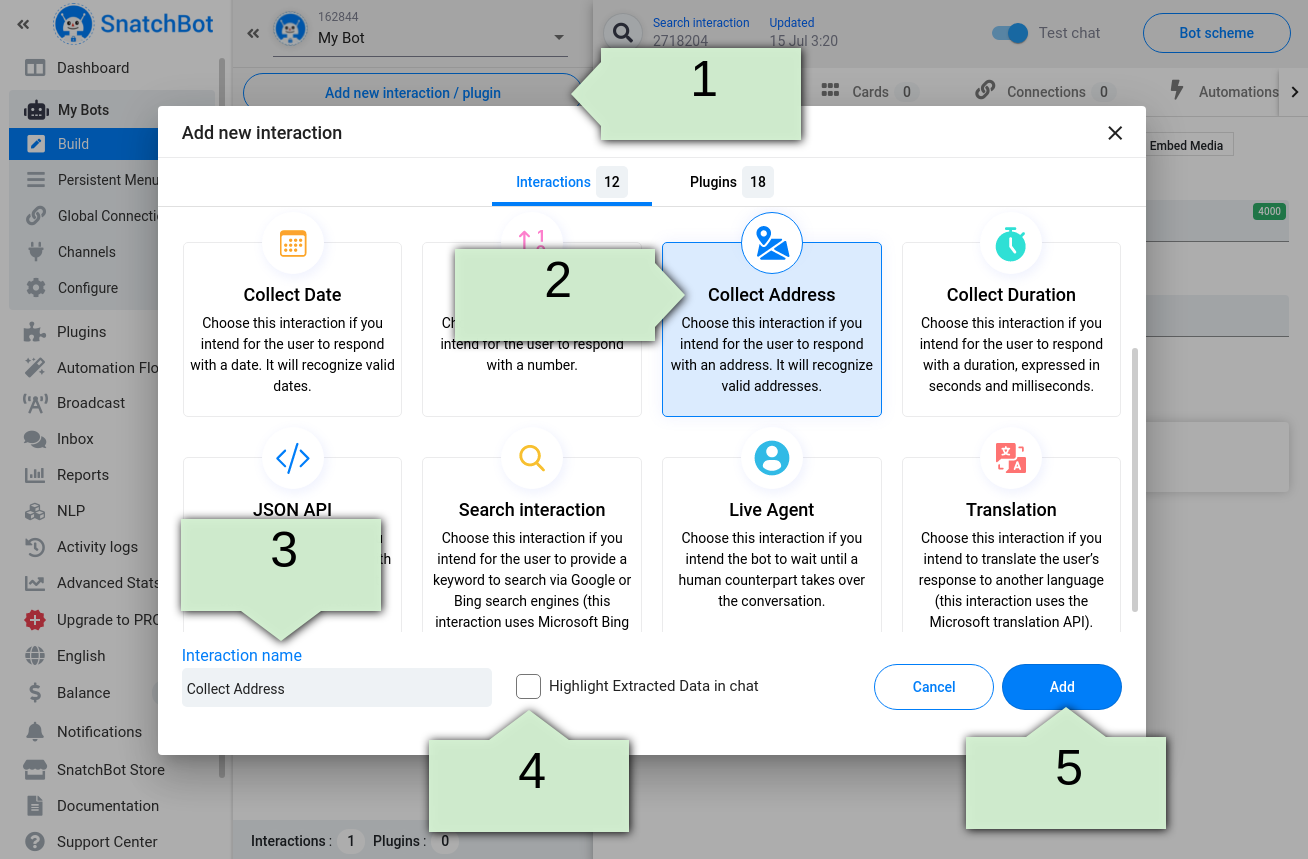
How to configure Collect Address interaction
Bot Message tab
Specify Bot Message along with an Error Response:
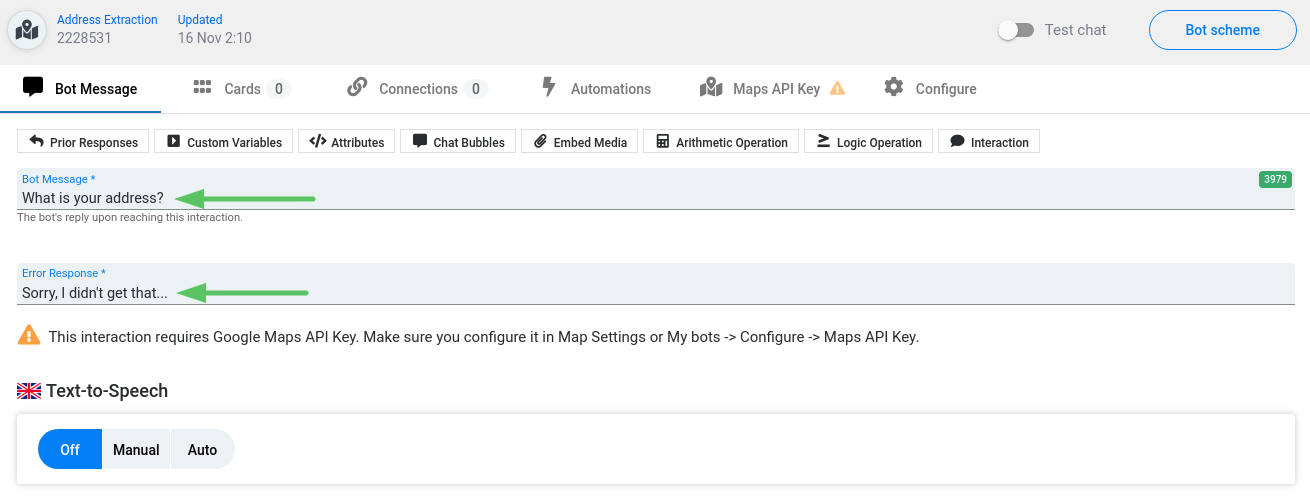
Maps API Key tab
Since Collect Address interaction is designed to parse user messages and detect user addresses via Google Maps API, you need to obtain a map API key before using this interaction.
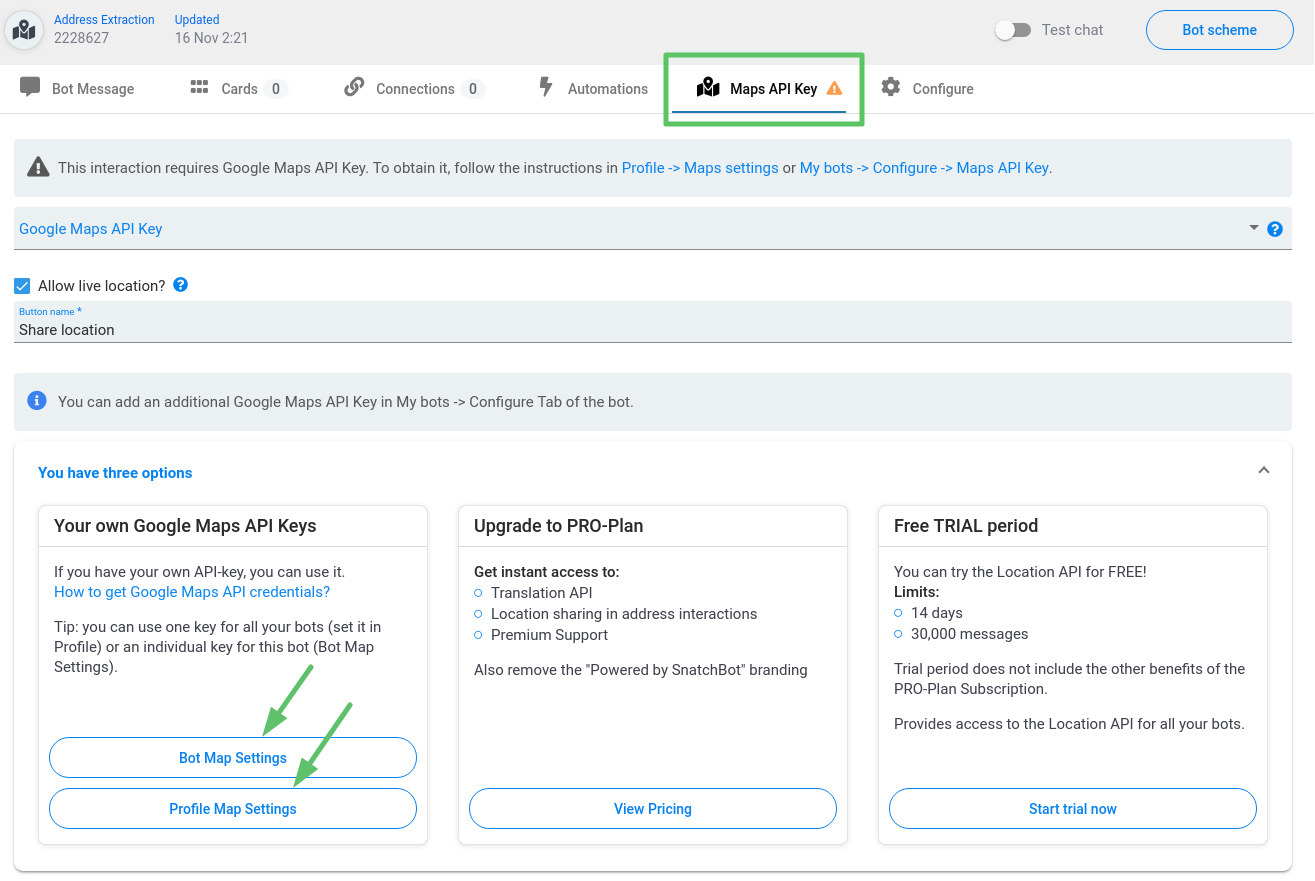
There are three options:
1. Use your own API key
You can enter your own API key in:
Profile page -> Map settings tab,
OR in:
Bot -> Configure -> Map settings tab.
Click the Bot map settings or Profile map settings button to open the tab you need. Next, follow the instructions in the tab to obtain a key. Once you have entered a key it will appear automatically in the Maps API Key tab.
When using the Collaboration feature, keys are hidden for bot administrators. Only the chatbot owner can see the key.
2. Upgrade your bot to PRO-Plan
Bots upgraded to PRO-Plan can utilize the Collect Address interaction without the need to input a Google Maps API Key. For PRO-bots, it is the SnatchBot system that pays for Google map requests.
All other benefits granted by PRO-Plan subscription are mentioned here.
3. Start free trial
You have the option to activate the Trial period from this tab. Free Trial gives you 30,000 free messages for 14 days. The trial applies to the Translation and Collect Address interactions, so you can use them freely without entering API keys.
A trial period can be activated only once in a single account.
The free trial does not apply to the administrator’s bots when using the Collaboration feature.
How does it work?
If a user enters an invalid address, then the bot will give the Error response:
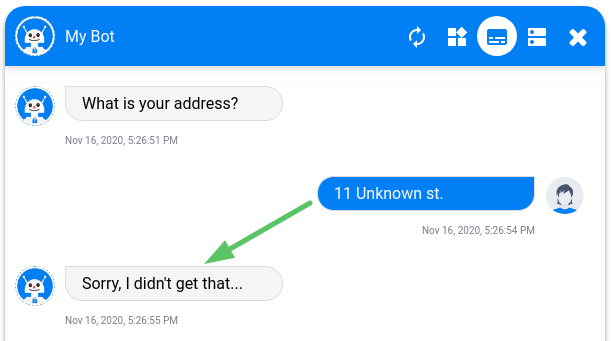
If a user enters a valid address, then the system will trigger the interaction that is set in the Connections tab. Otherwise, by default, the Fallback connection is set to 'do nothing'. In this case, the bot will give the same message again. If you change the Fallback connection then the system will redirect a user to another interaction after a correct address format has been entered.
The same goes for connections: if you add a simple or NLP connection, and if a user's response matches the conditions of one of the connections, then the system will redirect a user to another interaction.
In order to see the full extracted address in the Test chat, press the 'Highlight extracted data' button.
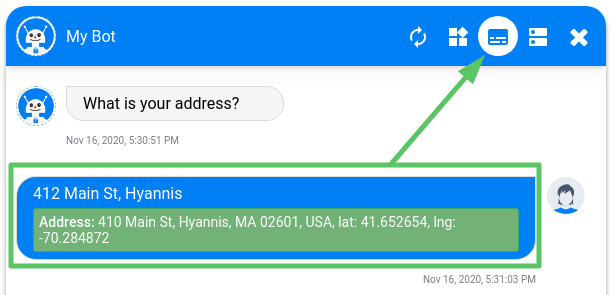
Make sure you have checked the 'Highlight extracted data' box in the interaction cell (or during creating the interaction):

Share location
This functionality allows you to ask users to share their live location.
Live location is supported in the following channels: Facebook Messenger (mobile), Skype, Line, Webchat, Viber and Telegram. In Facebook Messenger and Skype users can share their location by using Attach -> Location functionality of the app.
Tick the 'Allow live location?' checkbox to enable/disable the 'Share location' feature. In the 'Button name' field you can change the name of the button that will appear in the chat.
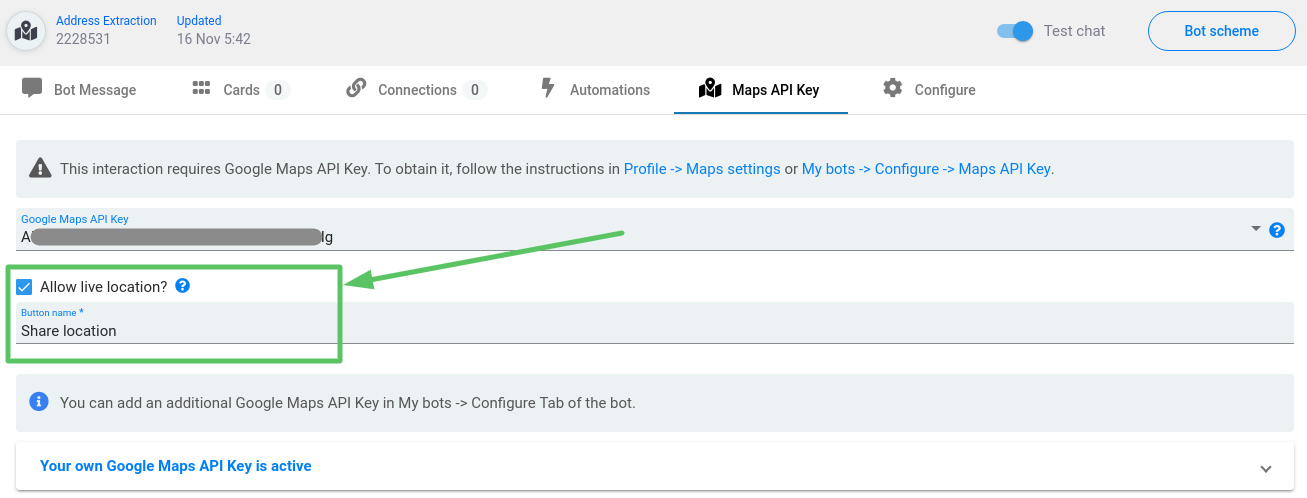
When the feature is enabled, your end-users will see the button in the chat when they go to this interaction:
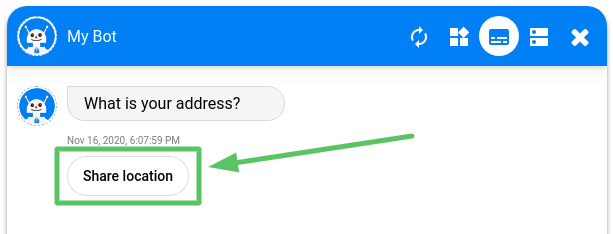
If you enable ‘share location’ and a user goes to the Collect Address interaction when using the Telegram channel, then the system will substitute all the items from the Persistent Menu with the 'Share location' button. The items will return back once the user leaves the interaction.
Upon pressing the button the system begins connecting to Google Maps.
Once user's location is detected, they will see a map and the Share location button in the chat:
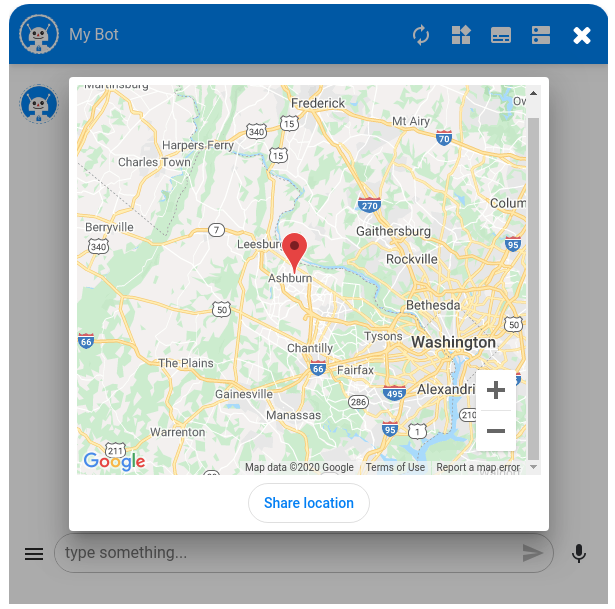
Watch this video tutorial ''Obtaining an address from a user with a chatbot''
Updated over 3 years ago
Collects and specifies numeric representations of time from the input of a user, converting it in seconds with millisecond precision.
